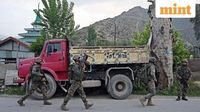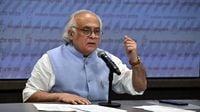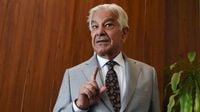Heightened tensions between India and Pakistan have once again thrust South Asia into the international spotlight, as leaders on both sides exchange sharp warnings and global powers weigh in with their own versions of events. The latest escalation follows a deadly terror attack in Kashmir and a short but intense military confrontation, with the reverberations now echoing from Islamabad to Washington and Beijing.
On November 20, 2025, Pakistan’s Defence Minister Khawaja Asif issued a dire warning in an interview with Samaa TV, declaring, “We cannot ignore (India) in any way… We are not ignoring India, and our preparation and alert are at maximum. We cannot trust India in any way. We cannot rule out (attack) as India can directly intervene. It can continue attacks from there (presumably Afghanistan) and it can go for an all-out war as per its strategy.” Asif’s comments, reported by The Economic Times and other outlets, came amid ongoing investigations into a terror network linked to the Red Fort blast earlier this month, which killed at least 15 people and injured several others.
Security agencies in India have pointed to possible ties between the network responsible for the Red Fort blast and Pakistan-based groups such as Jaish-e-Mohammad (JeM) and Lashkar-e-Taiba (LeT). Notably, JeM posters were spotted in Nowgam, Jammu and Kashmir, in October, signaling a resurgence of militant propaganda in the region. The Defence Minister’s remarks reflected a broader sense of unease in Islamabad, with Asif insisting Pakistan is fighting a “two-front” war—against India on one side, and, as he alleged, against Indian-backed attacks from Afghan soil on the other. India has categorically rejected this claim.
The sense of imminent danger has been heightened by statements from Indian military leaders. General Upendra Dwivedi, India’s Chief of Army Staff, recently declared at the Chanakya Defence Dialogue, “Operation Sindoor was just a trailer that ended in 88 hours. We are prepared for any circumstances in the future. If Pakistan gives a chance, we will teach it how to behave responsibly with a neighbouring nation.” According to India Today, Operation Sindoor, launched on May 7, 2025, targeted nine terror camps deep inside Pakistan and Pakistan-occupied Kashmir in response to the Pahalgam attack on April 22, which left 26 civilians dead. General Dwivedi revealed that 31 terrorists were killed during the operation, 61 percent of whom were from Pakistan. He further cautioned that India was ready for any future contingencies, underscoring the volatility of the situation.
As the region braced for further escalation, the international community became embroiled in the narrative. US President Donald Trump, never one to shy away from dramatic claims, asserted at the US-Saudi Investment Forum that he personally settled the India-Pakistan conflict by threatening both nations with a staggering 350 percent tariff. Trump recounted, “I am going to do it. Come back to me and I will take it down. But I am not going to have you guys shooting nuclear weapons at each other, killing millions of people and having the nuclear dust floating over Los Angeles.” He claimed that both Pakistani Prime Minister Shehbaz Sharif and Indian Prime Minister Narendra Modi called to thank him for averting war, with Modi allegedly stating, “We’re not going to go to war.”
Trump’s story, which he has repeated over 60 times since the May ceasefire, has been met with skepticism in New Delhi. India’s External Affairs Minister S. Jaishankar, speaking in Parliament, firmly denied that any such call took place between Modi and Trump during the hostilities. Instead, Jaishankar clarified that only US Vice-President JD Vance had telephoned Modi, warning of a potential massive Pakistani attack. “There was no linkage of trade in any of these conversations, and there was no talk between the Prime Minister and President Trump,” Jaishankar stated, as reported by NDTV.
Adding another layer to the already complex situation, the US-China Economic and Security Review Commission (USCC) released a report on November 20, 2025, asserting that Pakistan gained the upper hand during the four-day conflict in May. The report, submitted to the US Congress, claimed that China opportunistically used the conflict to showcase its advanced weaponry, even launching a disinformation campaign to undermine French Rafale jets and promote its own J-35 fighters. The USCC stated, “Pakistan’s military success over India in its four-day clash showcased Chinese weaponry.” It further alleged that Chinese embassies actively promoted the effectiveness of these systems in the aftermath, hoping to boost global arms sales.
The USCC’s characterization of the Pahalgam terror attack as an “insurgent attack” and its suggestion of Pakistani military success have sparked outrage in India. Congress MP Jairam Ramesh described the report as “astonishing and beyond understanding,” calling it a “severe setback” for diplomacy. Ramesh urged the Ministry of External Affairs to formally protest what he saw as a mischaracterization of both the terror attack and the conflict’s outcome.
Meanwhile, the Indian government has maintained that the ceasefire with Pakistan was reached directly between the two countries’ military leadership, specifically through talks between their Directors General of Military Operations (DGMOs) on May 10. This position stands in stark contrast to Trump’s repeated assertions of American mediation and intervention.
The multi-faceted crisis has also exposed the extent to which global powers, particularly China and the United States, seek to influence the outcome and perception of South Asian conflicts. The USCC report’s focus on China’s role—both as a supplier of advanced arms to Pakistan and as a purveyor of disinformation—highlights the growing complexity of modern warfare, where digital propaganda and technological prowess play pivotal roles alongside traditional military might.
Back on the ground, the people of Kashmir and the broader region remain caught in the crossfire—both literal and rhetorical. The resurgence of militant activity, the specter of cross-border attacks, and the ever-present risk of escalation between two nuclear-armed neighbors keep the stakes perilously high. As each side accuses the other of provocation and duplicity, and as international actors add their own spin to the story, the truth becomes harder to discern, and the path to lasting peace more elusive.
For now, the world watches and waits, hoping that cooler heads will prevail and that the latest round of saber-rattling will not spiral into a wider, more devastating conflict.


